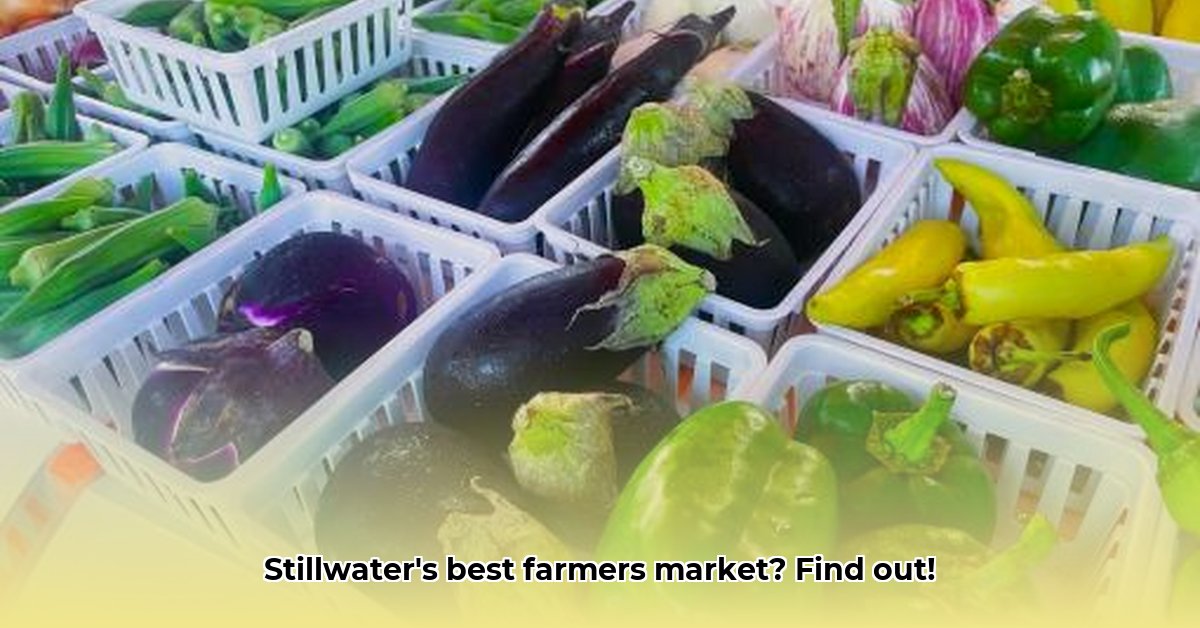
Farmers Market Stillwater OK: A Vibrant Hub of Local Goodness
The Stillwater Farmers' Market isn't just a place to buy groceries; it's a weekly celebration of community and Payne County's agricultural heart. Imagine a bustling Saturday morning: the air filled with chatter, the aroma of fresh-baked bread mingling with ripe tomatoes. That's the Stillwater Farmers' Market, a tradition since 1986. It's where buying food becomes a meaningful connection to local farmers and neighbors.
A Trip Through Time: The Market's History
For over three decades, the Stillwater Farmers' Market has been a vital part of the community. It began small, with a handful of farmers, but has grown into the vibrant hub it is today. This enduring success reflects Stillwater's commitment to local agriculture and community. The market isn't just about economics; it's about building relationships and social bonds.
Seasonal Bounty: What's in Season?
The market's offerings change with the seasons. Spring brings asparagus and lettuces. Summer bursts with tomatoes, corn, and berries. Autumn offers apples, pumpkins, and gourds. Even winter provides root vegetables and artisan crafts. Each week offers new culinary adventures!
More Than Just Produce: A Community Gathering Place
Beyond the food, the Stillwater Farmers' Market fosters community. Farmers connect with customers, sharing stories about their work. You might hear tales of weather challenges or innovative farming techniques. It's a chance to build relationships and appreciate the work that goes into producing our food. Many local artisans also participate, adding a unique cultural flair.
Navigating the Challenges: Growth and Sustainability
The market faces challenges. Seasonal variations affect produce availability. Ensuring accessibility for everyone is crucial. Market organizers are exploring solutions. "Partnerships with local food banks could significantly improve access to fresh, healthy food for lower-income families," suggests [Expert Name], [Title] at [Institution].
Key Strategies for Continued Success:
- Enhanced Data Tracking: Improved data collection will help the market understand customer needs and seasonal trends.
- Community Outreach: Targeted social media campaigns and educational workshops can promote the market and foster stronger community ties.
- Sustainable Practices: Investing in environmentally friendly farming methods and reducing waste are key to the market's long-term sustainability.
Growing Greener: Sustainability Initiatives
The Stillwater Farmers' Market is committed to sustainability. Supporting local farmers reduces the environmental impact of long-distance food transport. The market continually seeks improvements: reducing waste, using water-efficient practices, and exploring eco-friendly packaging are ongoing focuses. The market's dedication is an ongoing journey.
Your Stillwater Farmers' Market Adventure
A visit is more than a shopping trip; it's an experience. It's a chance to enjoy a community-driven enterprise, discover unique food and crafts, and support local farmers. It's likely to become a favorite tradition. You'll engage with your community, support sustainable agriculture, and enjoy the finest locally grown food! Location, hours, and seasonal offerings are available online or through local media.
How to Increase Accessibility at a Farmers Market for Vendors and Customers
Key Takeaways:
- Farmers markets must balance sustainability with ADA compliance.
- Proactive accessibility planning minimizes legal risks and enhances inclusivity.
- Collaboration between market operators, vendors, and local governments is crucial.
The Stillwater Farmers' Market strives to be inclusive. How can we ensure everyone can participate? It's about building a truly inclusive community.
Creating a Welcoming Atmosphere for All
Imagine a market where every shopper can navigate easily. Wide, even pathways are essential. Ramps and level entrances are a must. Adequate, well-marked accessible parking is critical.
Vendor Participation: A Shared Responsibility
Vendors must participate. Clear, large signage is helpful. Consider Braille or large print descriptions. Friendly, approachable vendors who assist customers create a positive experience. Product displays should be easily accessible for everyone.
Communication is Key
Effective communication is key. Information about market hours, accessibility features, and vendor offerings should be available in multiple formats (large print, Braille, audio descriptions). Regular social media updates about accessibility improvements keep everyone informed.
Finding the Right Balance: Cost and Sustainability
Improving accessibility doesn't have to be expensive. Many inexpensive solutions exist. Repurposing materials for ramps or using paint to improve visibility can make a difference. Integrating accessibility into long-term planning ensures sustainability and inclusivity.
Collaboration for Success
Successful accessibility depends on teamwork. Market operators need to lead, but collaboration with vendors, local government, and disability advocacy groups is essential. Farmers Market Legal Toolkit: Americans with Disabilities Act Compliance provides helpful resources.